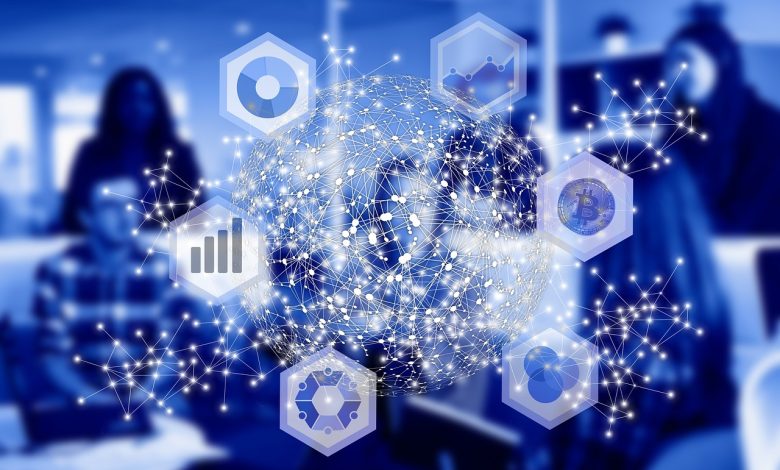What are the Benefits of Data Visualization in Data Analytics?

Data visualizations, such as bar charts, line charts, and scatter plots, are not only for show. Good data visualization services translate raw statistics into actionable insights by tapping our intrinsic capacity to identify patterns and trends.
Humans excel at detecting variations in length, size, and color. Data visualizations take advantage of this ability to express the relationship between numbers graphically.
Your organization will likely have millions or billions of data points, making it impossible to extract useful information without a graphical abstraction. A simple bar chart can uncover new patterns in your data that figures in a spreadsheet cannot.
Data visualization tools are being adopted by an increasing number of businesses today. These technologies allow users to effortlessly combine massive and heterogeneous data sources, resulting in spectacular graphics.
Companies can build an organization-wide reports by linking to databases, spreadsheets, and geographic files, resulting in increased sales, less waste, and increased efficiency.
The Importance of Data Visualization in Analytics
For the past decade, the fast expansion of data has been the leading business opportunity for enterprises. While data has grown in abundance across all businesses, the challenge has remained the same for all: how can organizations leverage insights and action from this data?
Investing in high-skill data scientists with a thorough knowledge of programming, machine learning, and big data was an early answer to this challenge. These professionals are in high demand because they can handle complicated data-driven challenges but often lack subject matter expertise and cannot manage organizational change. Organizations must not simply hire data professionals to address this problem. Instead, companies must include more tools, methods, and culture for their business teams, including IT professionals, executives, and audiences, to efficiently tap into their data.
Organizations must encourage curiosity, lean techniques, and teamwork to create a culture that appreciates data and scales discoveries. This can be accomplished by utilizing self-service analytics solutions that facilitate data exploration.
This also entails shifting from traditional reporting methods to agile, iterative techniques. Reports and dashboards can be thought of as iterative, dynamic data products. To scale development requires agile approaches and interdisciplinary teams as part of the process. Organizations must concentrate on making analytics a key part of their culture to grow insights and action from data.
Also Read: Benefits of Big Data Analytics in Education
Benefits of Data Visualization in Data Analytics
Data analytics is a fairly wide subject; if you are not attentive, it might be tough to grasp every aspect of it. When you comprehend the notion of data visualization, you’ll be able to process vast amounts of information and show it in a coherent form. It would be an understatement to suggest that data visualization is vital. You cannot properly perceive data analytics without data visualization.
Data visualization is incredibly valuable in data analytics because it allows you to analyze and extract useful information from the data quickly. Data visualization is significant in data analytics for a variety of reasons, some of which are listed below:
1. Data visualization is interactive:
A data analyst can utilize data visualization to communicate with users in ways that textual table-based data cannot. Telling a story with data is what visualization is all about. It becomes engaged with the user as a result of this. The user can concentrate on the data visualization components that they find most interesting. While using data visualization, you may gain a holistic perspective of the data by employing several types of visual charts and varied colors and shapes.
With this in place, the user can quickly grasp the information the data conveys.
2. Reveals ‘hidden’ patterns in data:
One of the most significant functions of data visualization is to display information in a visually appealing manner. It looks for trends in data that may appear to be buried. This is because discovering data trends is easier when all the data is placed out in front of you in a visual format rather than in a tabular format.
For example, a bar chart depicts the number of sales made for a product each month. It is clear that the month with the highest bar represents the month when the product was sold the most, and the month with the lowest bar represents the month when the product was sold the least.
3. Help in Making Business Decisions:
Gone are the days when corporations made judgments solely on the experiences or instincts of a few top-level employees.
Most firms are now adopting data-driven decision-making (DDDM), in which data is used to inform all critical decisions. However, visualizations are one of the most important tools they employ to study all of the overwhelming business data.
As we established in the preceding point, visualizations provide businesses with significant actionable insight.
Although data visualization is not the only approach to executing this type of data analysis, it is the most effective. Because it best reveals customer trends and current market situations.
4. Communicating with Stakeholders:
Stakeholders do not care how data scientists approach the model. They only care about getting the exact solution they are looking for. However, given their lack of technical abilities, how do you believe the results will be communicated to them so they can provide appropriate feedback? The answer is none other than data visualization!
Data science initiatives are iterative processes, and it is critical to keep stakeholders updated as the data scientists work through the procedures. To do this, data scientists frequently employ data visualization approaches. It allows stakeholders to acquire all the information they require without becoming bogged down in project technical specifics.
Data scientists utilize a variety of performance and accuracy measures to demonstrate how a project is progressing in sufficient detail. The visualizations also provide information about the project’s progress and its focus areas. Stakeholders are looking for this kind of information, and there’s no better way to deliver it than through visuals.
5. Models of Machine Learning:
Creating distinctive machine learning models is one of the most essential skills a data scientist should have. Making models necessitates knowledge of a statistical programming language such as Python or R, but this isn’t the only requirement.
Developing efficient models necessitates a significant amount of data analysis. Because if you do not know enough about the dataset, you cannot alter it according to its specifics and you would end up with an accurate model.
Developing machine learning solutions necessitates deciding on a course of action. It takes a combination of data visualization and exploratory data analysis to help you choose that option.
Final Takeaway-
The term “data visualization” simply refers to the presentation of visual information based on specific data. In contrast to providing drab and uninteresting numbers that must be analyzed carefully to make sense of them, this method is highly successful.
Inside and outside data science projects, data visualization has a wide range of uses. It accurately packs essential information into it, and the same data that would have been spread across multiple pages can now be seen in a single graph. This, however, is only a sliver of its potential.
So, it is high time for everyone to recognize the significance of data visualization in data analytics services. Contact us today at SG Analytics. By leveraging data to produce new internal and external strategic benefits, we can help you transform your operations.





